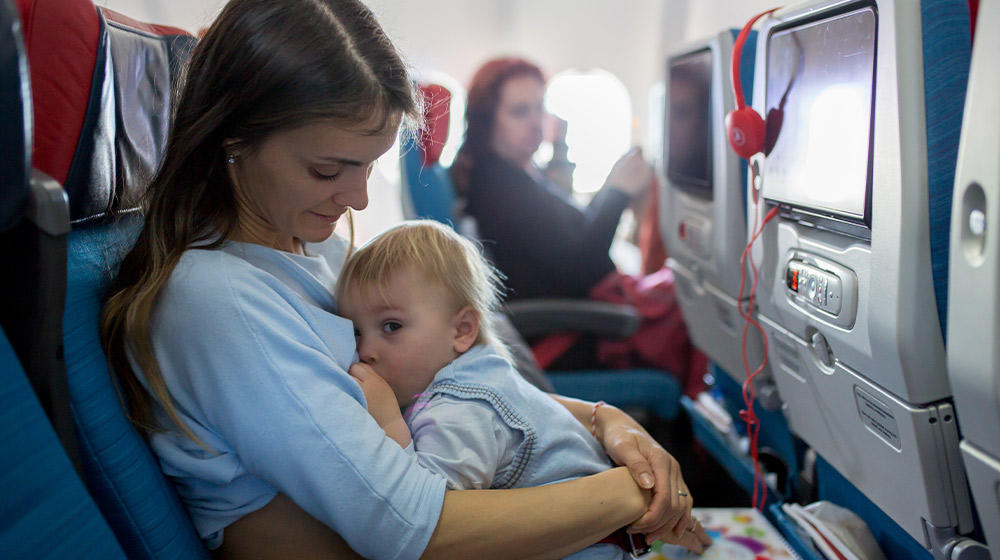Otitis media can affect both children and adults, although children are statistically more frequently affected. Around 80% of children suffer from otitis media at least once in the first three years of life. 45% of them even up to three times. Flying with a middle ear infection can be dangerous for your child's health, as many parents fear that their sick child's eardrum could rupture or cause severe pain when flying. In this guide, we give you useful tips on how to avoid potential problems during a flight.
Is flying with a middle ear infection dangerous?
When an airplane takes off and lands, the ambient pressure rises sharply, causing a large pressure difference between the outer ear and the inner ear. Normally, the Eustachian tube equalizes this pressure difference. You can help equalize the pressure by yawning, sucking a piece of candy, chewing gum or swallowing. Another method is the Valsalva method: close your mouth, hold your nose shut and try to breathe out through your nose. To help equalize the pressure in your child, you can breastfeed, give them a pacifier or bottle or offer them something to chew.
Inflammation of the middle ear affects the Eustachian tube - this can cause painful pressure sensations when flying. It also impairs the ability of the Eustachian tube to equalize the pressure difference when flying. If the accumulated pressure is too great, the eardrum can rupture.
Flying with a middle ear infection: 4 possible situations
If your child suffers from a middle ear infection or wears tympanostomy tubes, the following situations must be taken into account:
- External inflammation of the middle ear (swimmer's ear): This inflammation affects the ear canal behind the eardrum. Flying is usually possible as the pressure equalization works. Symptoms may include swelling, frequent crying due to pain and hypersensitivity when touching the ear.
- Serous or mucous otitis media: Seek advice from your pediatrician's office. This type of middle ear infection causes fluid to build up behind the eardrum. Symptoms are difficult to recognize as it is not an infection with pain or fever. A child with this type of middle ear infection may experience hearing loss. If the eardrum has already been opened (e.g. by the doctor), flying is possible. Otherwise you should refrain from flying.
- Acute otitis media (OMA): This is an infection of the inner ear with pus accumulating behind the eardrum. The symptoms are very painful. We advise against flying in this condition. Do not fly until two weeks after the end of treatment.
- Transtympanic ventilation tubes (tympanic tubes): These tubes allow air exchange between the inner ear and outer ear and prevent chronic middle ear infections. Pressure equalization usually works without any problems.
If you are planning a flight and you or your child have symptoms of a middle ear infection, seek advice from a doctor. And read our guide “How to fly relaxed on vacation with your baby”.
Our tip: As middle ear infections are often caused by contaminated water, good ear hygiene is important, especially if your children swim a lot. Use an ear cleaning spray or cotton buds, but don't go too deep into the ear canal and only clean the visible part of the ear.
Well protected on vacation with travel insurance
So that you can enjoy your trip worry-free, we recommend travel insurance that provides all-round protection for your family. Our ReiseSchutz offers you comprehensive protection during your trip with medical benefits abroad in the event of illness or accident, including transportation home, coverage of search and rescue costs and replacement value cover for your luggage.


